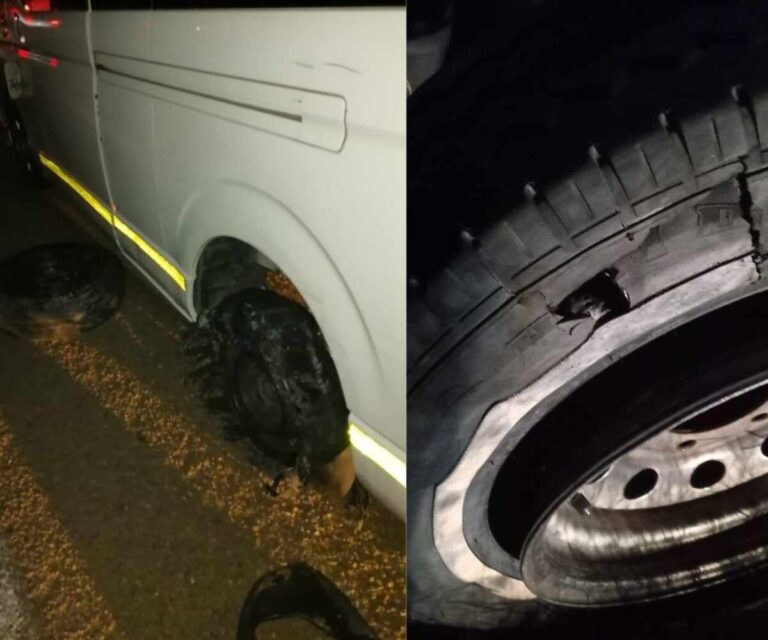More and more spiking incidents are reported every day, with some saying these spikings are happening in broad daylight.
HIGHWAY SPIKINGS ARE REPORTED DAILY NOW
According to crime activist Yusuf Abramjee, even a police vehicle became a target on Thursday evening.
Private investigator Mike Bolhuis previously explained the modus operandi road spikers use.
HERE IS THE MODUS OPERANDI THAT THESE CRIMINALS ARE USING
“When the vehicle is approximately 400-500 meters away, criminals throw the spikes in the road.
“Criminals also place the spikes in black plastic bags or cardboard boxes, and it is therefore not easy to recognize immediately.”
Bolhuis said criminals also use concrete lintels and place them right across the road.
“It is almost impossible for the driver to see this as it is too far away and too dark.”
Bolhuis mentioned that there are usually two groups involved
He said there are usually two groups involved in this crime.
“The spiking group and the stopper group or the robbers.
The second group waits for about 50 – 150m away from the place where the spiking takes place.”
TIPS TO AVOID HIGHWAY SPIKE ROBBERIES
Bolhuis warned that criminals also hang rocks and bricks at windscreen heights from bridges to cause vehicles to stop before robbing them.
He suggested that motorists avoid driving alone at night.
“Ensure that you charge your cellphone to its maximum and, if possible, share your live location with a family member or friend.”
Bolhuis added that motorists should avoid secluded and poorly lit roads, as well as highways in and around the city at night.
IT IS SAFER TO DRIVE AT 40KM/HOUR THAN TO STOP
“Never drive over a plastic bag or a cardboard box in the road. Drive approximately 100 – 200 meters behind another car in the same lane.
“Travel at a reasonable speed – that will allow you to swerve out of the way and avoid the spikes.”
He urged motorists to stay calm should it happen that you do drive over the spikes.
“Stay calm and do not stop. Continue driving but reduce speed if need be. Do not panic if you hear the metal of your car’s rims or even see sparks.”
According to Bolhuis, it is less dangerous to proceed at 40km/hour than it is to stop.
WHERE ARE THE HOT SPOTS?
“Further down the road, you might be able to take an off-ramp, stop at a tollgate, or a garage where you will be able to make an emergency call or ask for help.”
Authorities have identified the following routes as hotspots for such acts:
- The N4 Mpumalanga to Pretoria between Solomon Mahlangu and Watermeyer Offramp.
- The N4 Pretoria to Mpumalanga between Bronkhorstspruit and Balmoral off-ramp.
- The N1 Polokwane N4 Mpumalanga interchange in Pretoria.
- The N4 to Rustenburg between R80 Mabopane Freeway and Brits plaza tollgate.
- Golden Highway.
- R21 Freeway from OR Tambo International Airport to Pretoria.
Meanwhile, the police management would like to assure motorists that the police are working with other external role players and partners, including private security companies, to prevent and combat spiking incidents and other criminal activities on the N4 road, especially in the Brits area.
“As part of addressing the situation, various actions are being executed including regular deployments along the affected road. It has also been noted that some of these incidents are not reported to the police,”
police spokesperson Brigadier Sabata Mokgwabone said.
While the incidents are traumatic, we advise motorists or victims to report them to the police as soon as possible. You can also do this by calling the SAPS Crime Stop number: 08600 10111.

